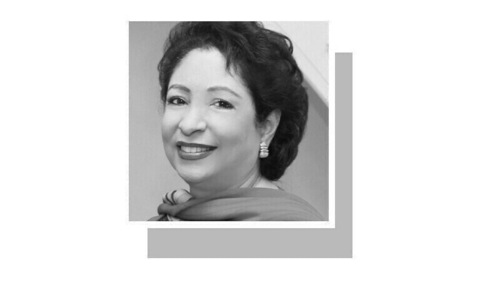
A SIDE from some Persian-Urdu and Urdu-Persian dictionaries, the early Urdu lexicography was almost an exclusive domain of Europeans. The earliest Urdu dictionary is said to have been compiled in 1630 in Surat, Gujarat, as mentioned by George Abraham Grierson (1851-1941) in his Linguistic Survey of India. G. A. Grierson published in 19 volumes and some 8,000 pages the survey covering some 350 languages and dialects spoken in the subcontinent, for which he collected information for about 30 years.
Europeans set up their businesses at Surat, Gujarat, when Emperor Jahangir permitted them to establish trade and Urdu’s earliest dictionary, a polyglot, was compiled at Surat, probably to help these very foreigners communicate with local people. According to Grierson “Mr Quaritch, in his Oriental Catalogue published in 1887, mentions an MS Dictionary then in his possession (No. 34,724 in the Catalogue), which he doubtfully dates as ‘Surat, about 1630’.
This is a dictionary of Persian, Hindustani, English and Portuguese and he describes with great curiosity as being the first work of its kind. It was probably compiled for the use of the English factory at Surat. The Persian is given in native and Roman letters, the Hindustani in Gujarati and Roman letters. It is a small folio manuscript on Oriental tinted paper“. (vol.9, part I, page 3-4, Calcutta, 1916). Grierson adds in footnote that “It has since been sold and I have failed to trace it”.
Grierson has also mentioned another dictionary, compiled in 1704 in Surat, which listed words in four languages: Urdu, French, Hindi and Latin. Titled Lexicon Linguae Indostanicae, it was compiled by Franciscus Turonesis, a Capuchin missionary, and was in two volumes, each comprising about 500 pages. In fact Moulvi Abdul Haq has given a long list of bilingual dictionaries (Urdu-English and English-Urdu) that were compiled by Europeans in 18th and 19th centuries. Many of these dictionaries and works on Urdu grammar used the word ‘Hindustani’ —with variant spellings, such as, Hindoostanee and even Indostan — for Urdu, since the word Hindustani or its variants were used to mention a language commonly spoken in the subcontinent and which was mostly written in Perso-Arabic script.
The use of Nagari script was very rare before the establishment of Fort William College in May 1800, where a separate Hindi department was established and books in Nagari script began to appear. Even Gian Chand Jain has admitted in his controversial book Aik Bhasha, Do Likhaavat, Do Adab that before Fort William College, there were hardly 12 books in Nagari script. So in many cases, by Hindustani the compilers of early dictionaries and early grammars meant Urdu.
This fact is established by the use of Perso-Arabic script in early Urdu lexicographic works — instead of Nagari script — and the subentries in these dictionaries even in Roman script are given in an alphabetical order strictly following Urdu alphabet and not Nagari or Roman alphabet. For instance, the sequence of the words listed in John T. Platts’ dictionary is a, b, p and t etc., (as in Urdu), instead of a, b, c and d etc., (as in English). Similarly, the alphabetic order in Nagari or Hindi script is totally different and none of the early Urdu dictionaries follow the Hindi’s alphabetical order.
But some scholars insist that these works, early dictionaries and grammars, are in Hindi and not in Urdu, conveniently ignoring the script and the alphabetical order, which is essentially Urdu and much different from Hindi, albeit some dictionaries mention an entry with Prakrit or Sanskrit origin in Nagari script as well, but the original entries are in Urdu script and in most of early dictionaries the Nagari script is given as additional information. For instance, S.W Fallon’s A New Hindustani-English Dictionary (1879) gives entries in Urdu type, explaining them in English and subentries are in Roman script but sequence is according to Urdu alphabet. Interestingly, John T. Platts named his book A Grammar of the Hindustani Language or Urdu (1874). It clearly proves that in such books Hindustani means Urdu and calling them Hindi is a misunderstanding.
Joseph Taylor’s dictionary is another example of how Urdu dictionaries are these days blatantly labelled as Hindi. Both the first (1808) and the second (1820) edition of Taylor’s A Dictionary Hindoostanee and English give entries in Urdu script and follow the Urdu alphabetical order. It also gives some Persian couplets in Perso-Arabic/Urdu script. The 865-page second edition gives a longish appendix that lists Urdu and Persian proverbs and couplets by well-known Urdu poets, such as Mir Taqi Mir and Mirza Sauda. The index is in Perso-Arabic/Urdu script and a transliteration in Roman script along with the English translation is provided.
A reprinted edition of Taylor’s dictionary is available online, though they have innocently tagged it as a Hindi dictionary. Ignorance is definitely bliss in this case!
Published in Dawn, October 7th, 2024












































